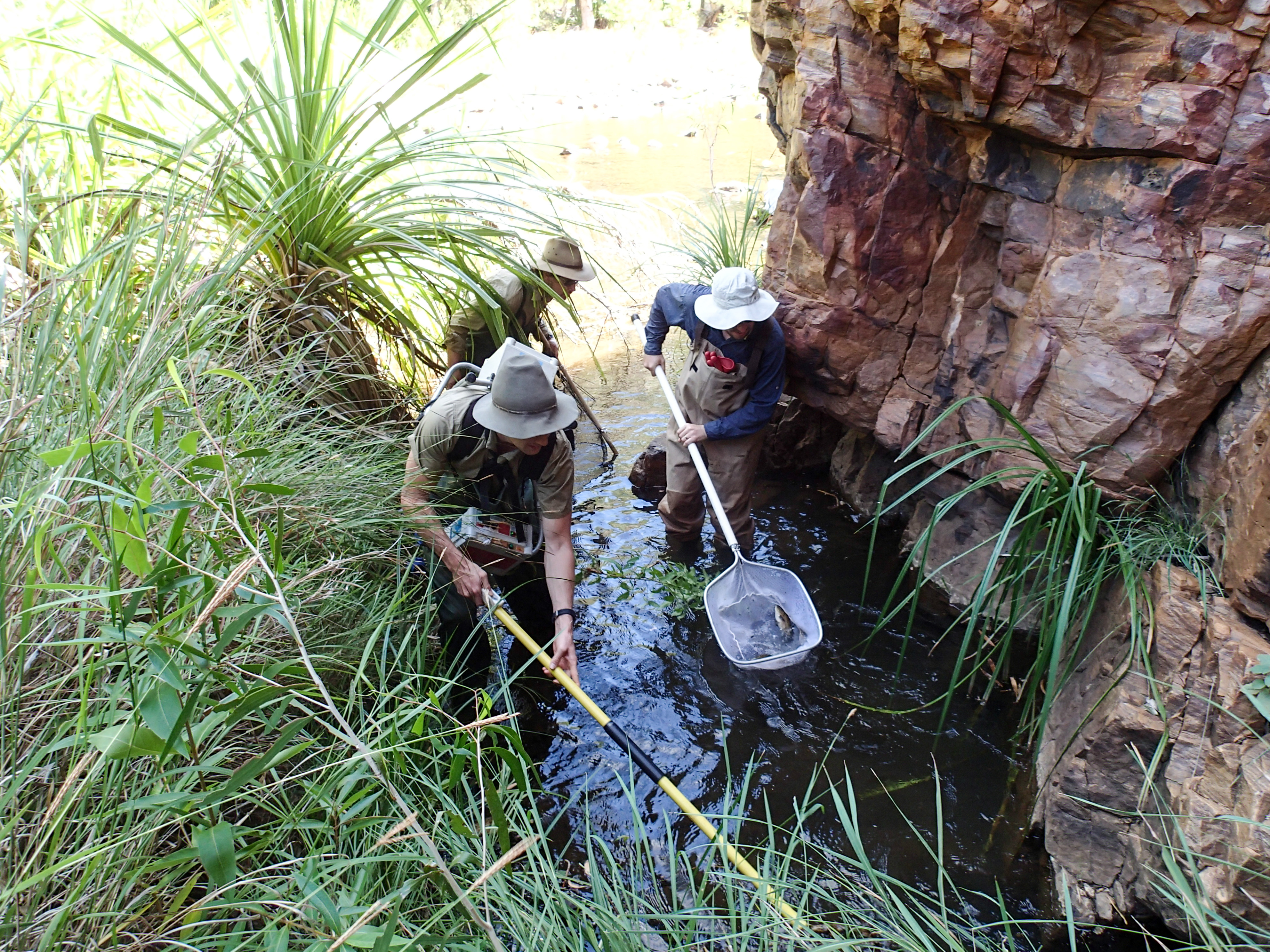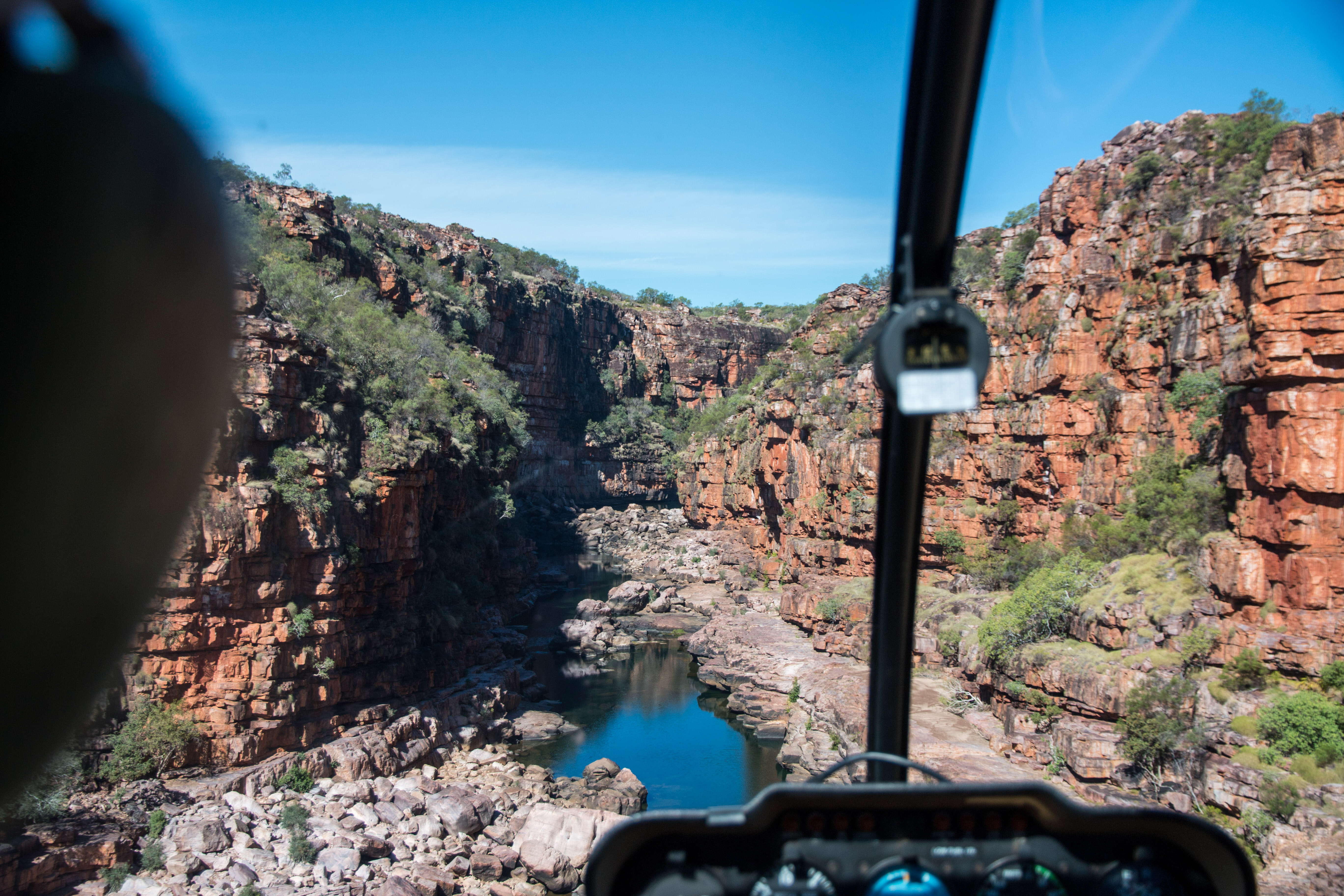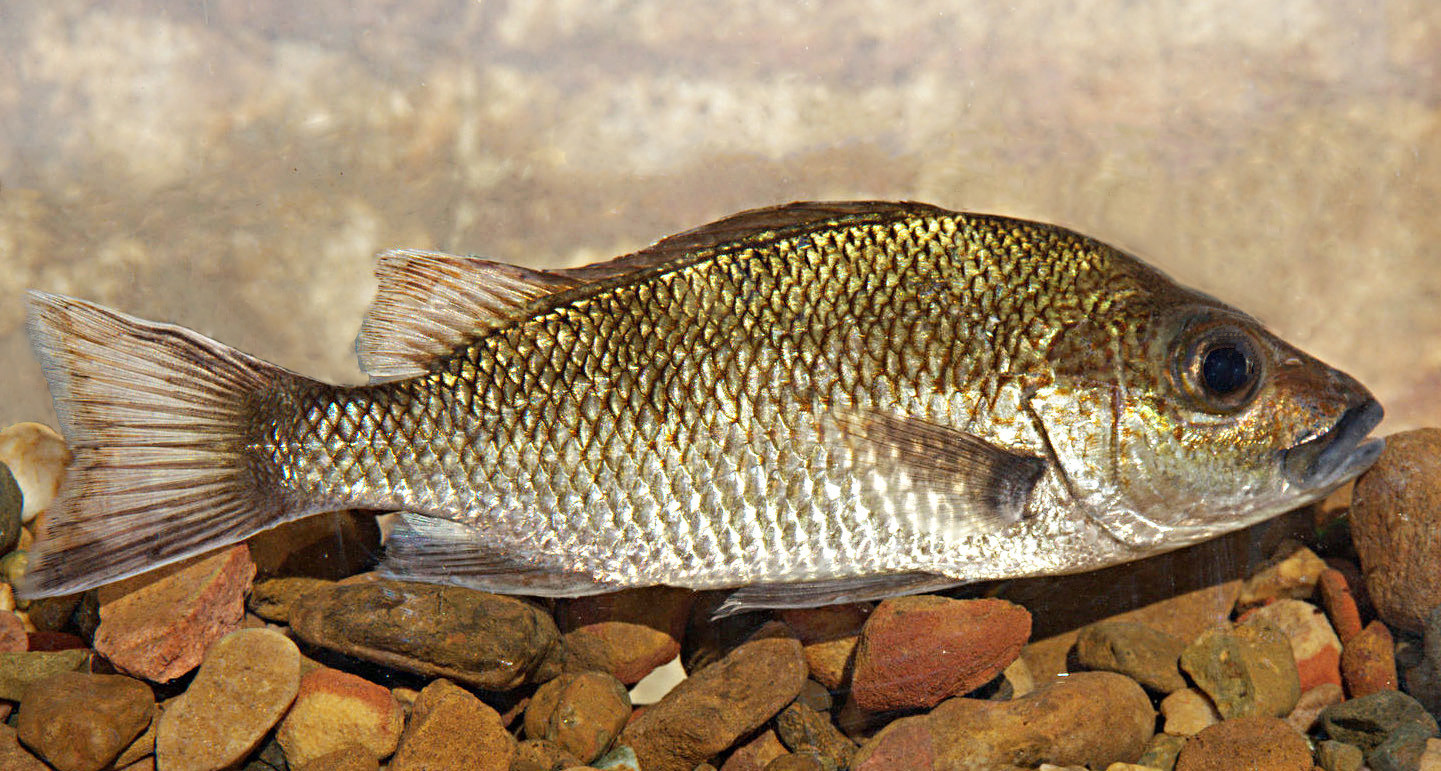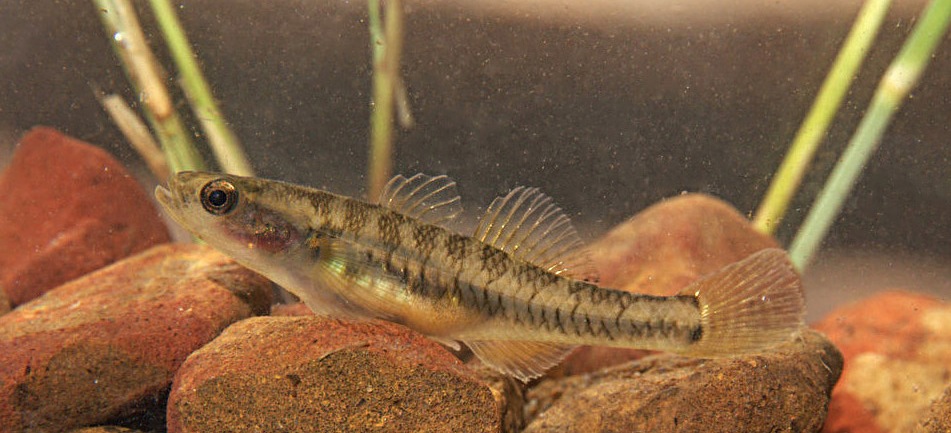Discovered: A treasure trove of new fish

Researchers have found 20 new species of freshwater fish in the remote Kimberley region - and had to fend off an angry crocodile in the process
Published 6 January 2016
Most scientists dream of discovering a new species.
This story has 20 new species, a crocodile attack and includes a guest appearance by one of Australia’s most famous authors.
Let me take you back to how it started.
I’ve worked in the western Northern Territory for the past decade, assessing the damage from invading toxic cane toads on freshwater animals. It piqued my interest in the Kimberley, just over the border in Western Australia, with its rugged gorges and spectacular rivers.

The Kimberley’s remoteness means many of its rivers have never been surveyed for freshwater fish. Surely if we looked a little deeper, we thought, there would be some secrets just waiting to be uncovered below the water’s surface.
We already knew the Kimberley had a great diversity of fish, with 18 species found only there. None were protected in any way, mostly because not enough is known about them to make any kind of assessment.
In 2012, my University of Melbourne colleague, Professor Steve Swearer, Martin Gomon from Museum Victoria and I were granted funding by a philanthropic organisation, the Hermon Slade Foundation, to assess the extinction risks of the unique fish fauna of the Kimberley.
Further funding from the Holsworth Wildlife Research Endowment to PhD students Matthew Le Feuvre and James Shelley enabled us to fly helicopters into remote locations never before sampled by scientists.
This sparked a three-year project living out of tents on the banks of 17 rivers across the Kimberley. It became a modern exploration story of remote fieldwork in some of Australia’s most remarkable and rugged areas, mixed with elements of high adventure.
With underwater cameras, electrofishers and nets, we sampled fish of all shapes and sizes. The remote area work was hot, tough and on occasion, dangerous.

While snorkelling in the Glenelg River to place an underwater camera, James Shelley was bitten across the top of the head by a freshwater crocodile.
After pushing the animal off and swimming to the bank, he fended off the aggressive croc a second time as it came in for another bite.
Our efforts uncovered 20 new species unknown to science.
About eight of the new species were discovered through painstaking and methodical sampling in locations that were accessible by road, albeit some of the worst in Australia.
The Eureka moment, however, came via helicoptering into the Prince Regent, Roe and Glenelg rivers.
This two-week trip in 2013 produced 12 new species at a rate of almost one per day. Clearly, the Kimberley is a treasure trove for freshwater fish.
What does the new species discovery mean?
In Australia, there are roughly 200 fish species that are dependent on freshwater habitats. Adding another 20 species increases our nation’s freshwater fish biodiversity by 10 per cent.
The new species we found in the Kimberley fall within three categories:
16 new grunters (terapontidae)
Three new gudgeons (eleotridae)
One new hardy head (atherinidae)
In Pictures: Meet Australia’s newest freshwater fish here.
The Kimberley region now has to be viewed as a hotspot of freshwater fish species biodiversity, with more unique species than any other area in Australia.
Digging deeper, we analysed all of Australia’s freshwater fish species to work out what kinds of characteristics make them vulnerable and how the unique Kimberley species compare.
A paper we published in the journal Global Ecology and Biogeography shows that many of the 18 known and 20 newly discovered species unique to the Kimberley share similar characteristics with fish species elsewhere in Australia that are conservation listed as vulnerable, threatened or endangered.
Despite their potential vulnerability, no fish species in the Kimberley are conservation listed.
The process of formally registered the new species is long and involved, but we’ve set about naming some of the fish.
One of the 16 new grunters – a 25cm-long beauty found in the Prince Regent River – will be named after famed Australian author Tim Winton.
It seemed a perfect fit, given his passion for the Kimberley, conservation in general as well as the love of fish and water that flows through his books.
He said: “It’s a great honour to have a species named after you. It’s unexpected and surprisingly gratifying - and of course completely undeserved.
“I could go on to say how pleased I am that it should be such an elusive fish - and so damned handsome. But the plain fact is, science has forever attached my name to a species of grunter. That’s ... well, grounding.”

In all seriousness, the author – like us – hopes more can be done to step up conservation efforts in the Kimberley. As he says, the Kimberley is a treasure and “groundbreaking discoveries like these underline just how much there is still to learn about this special region”.
Fish are really a visible “tip of the iceberg” of biodiversity. They are relatively easy to catch and describe in comparison to many other plants and animals in rivers.
If we managed to double the number of unique species of fish in just three years, it means the entire biodiversity of life in Kimberley rivers is underestimated. There are many regions in northern Australia that are as poorly surveyed as the Kimberley, so biodiversity right across northern Australia is likely similarly underestimated.
The Federal Government’s recent Our North, Our Future: White Paper for Developing Northern Australia lays out a plan to modify water resources across Australia’s north to enable future development of agriculture and other industries.

Before there is significant development to Australia’s north to make it Asia’s food bowl, we need to understand the true nature of the region’s biodiversity. Our plants and animals are our national heritage that belongs to all Australians.
We have much more to do to fully describe what lives in Australia’s northern rivers and understand what may threaten them. Without this knowledge, we will likely repeat many of the sins of the past that have degraded the ecosystems of our major southern river basins.
The Native Australian Animals Trust supports the University of Melbourne’s work to understand and conserve Australia’s unique wildlife and environments.
Banner Image: The researchers at work in the Kimberley. Picture: Matt Le Feuvre

